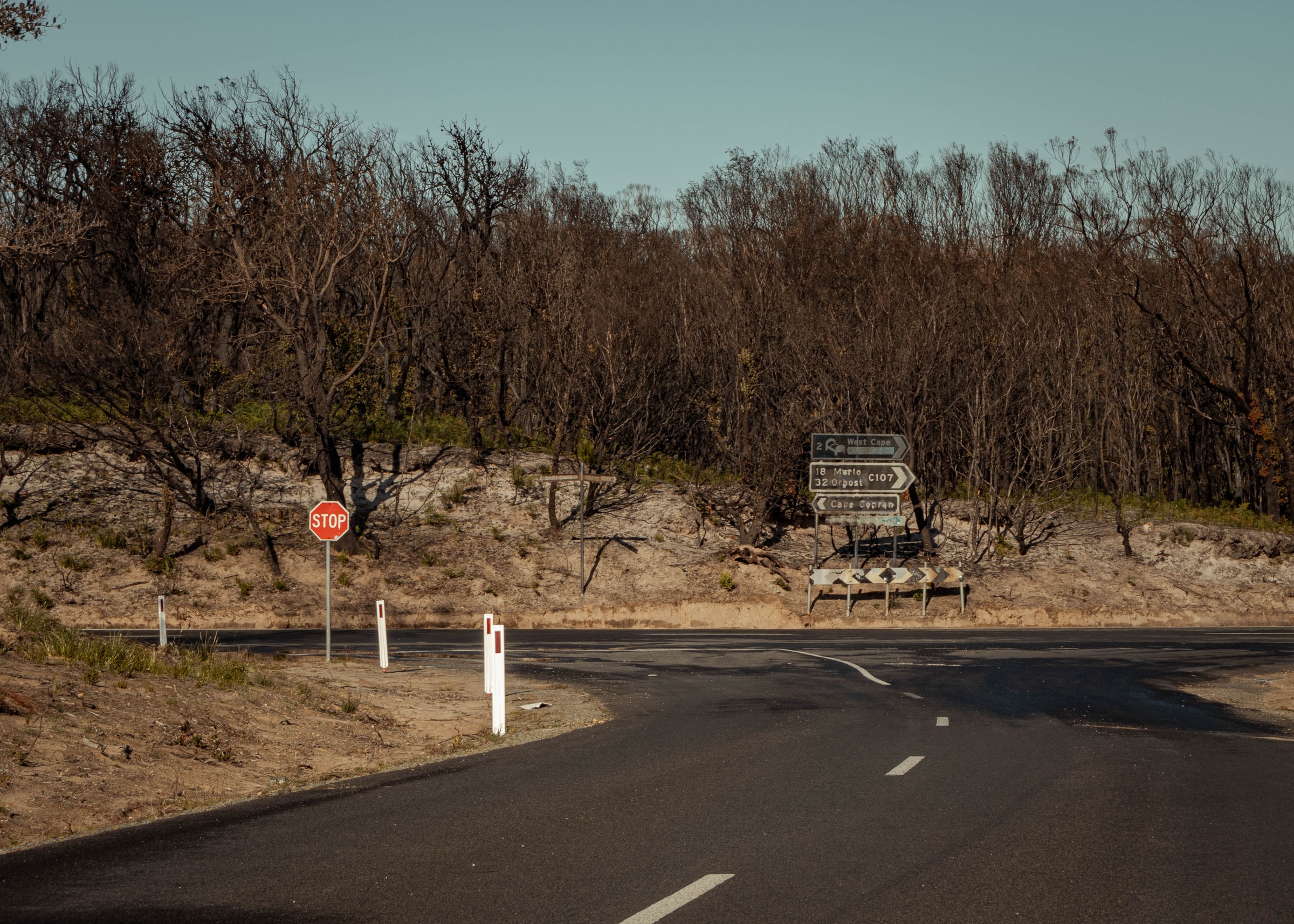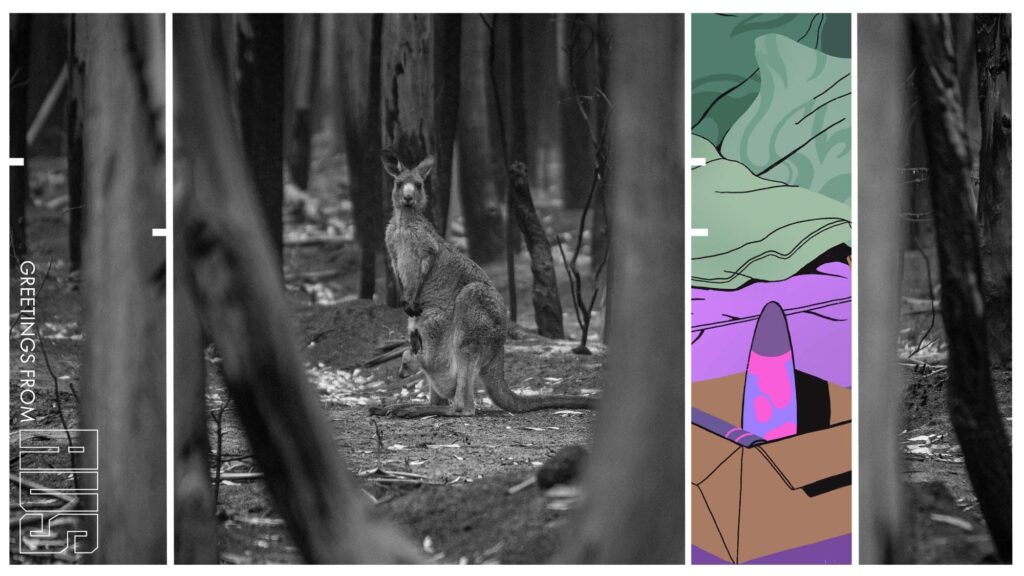In Undullah Street, Ellen van Neerven explores the impact of climate migration. It’s an issue that has many layers to it. To explore it further, we thought we’d tap into a format that also has many layers to it – literally! The format is Wired’s 5-Levels, which asks an expert to explain a concept to an audience with differing degrees of knowledge: a child, a teenager, college student, postgraduate student and an industry colleague. Wired uses video to do this, but we asked climate writer and information designer Duncan Geere to explain in words, to different audiences, the key concepts Ellen writes about in her story.
Top 10 Frontier Technologies for Climate Action is a report we designed using multiple media formats, a more engaging way of presenting an academic report. We also did the report design for Exponential Roadmap, an initiative to halve world emissions by 2030. If you’d like to explore a complex issue in fascinating ways, we’d love to hear from you.
To a child
In the last 150 years, people have burnt a lot of coal and oil, and cut down a lot of trees. This has made our planet hotter and our weather more dangerous. In Australia there are some places where scientists say it will soon be too hot or dangerous for people to live. The people in Ellen van Neerven’s story have had to move away from their home in Australia because it was too dangerous to live there. They’re trying to find a new place to live which is safer.
Undullah Street is a timely reminder that those hundreds of millions of people have complex thoughts and difficult feelings all of their own, and urges us to treat them as humans, not as mere statistics.
To a teenager
Climate migration is about people being forced to abandon their homes because climate change has made it too hard to live there. Australia is much warmer today than it was a century ago and it’s also more dangerous – there are more heatwaves, wildfires and floods. People living on the coast have had to move as the sea has risen.
Ellen van Neerven’s story is set in the future, when climate change has got so bad that some parts of Australia are uninhabitable and some of the islands in the Pacific are underwater. Scientists think this could happen by the middle of the century. That’s going to mean a lot of people have to find new homes – like the people in the story.
It’s not easy to abandon the place where your family has lived for generations, and the story shows the stress and other difficulties that it causes. Migration is a complicated topic. It’s not always easy to say that people are moving simply because of climate change.
But scientists think it’s very likely that climate change will mean that millions of people will have to find new homes in the coming years. The story reminds us that it’s important that we treat them as humans and not just as statistics.

To a college student
Ellen van Neerven’s story is about climate migration, where people are forced to abandon their homes for reasons linked to climate change – such as a worsening risk of cyclones, droughts and heatwaves, or poorer farming yields.
According to the latest scientific research, collected by an organisation called the Intergovernmental Panel on Climate Change (IPCC), Australia’s land areas have warmed by about 1.4°C in the last 110 years. This temperature rise has been accompanied by a rise in the frequency of extreme weather events like heatwaves, fire weather, heavy rainfall and flooding.
These trends are expected to continue in the coming decades as temperatures rise further. Sea level rise will go on in the 21st century and beyond. It will lead to coastal flooding and shoreline retreat, by hundreds of metres in some cases, while fire weather events are projected to get worse. Also expected to worsen are heavy rainfall, river floods, heat extremes, sand and dust storms, marine heatwaves and ocean acidity. This will make it very hard for people to make a living in the worst-affected areas.
Migration is a very complex subject, with rising temperatures and extreme weather being just two of the factors that go into the difficult decision to abandon a home. This makes it hard to definitively say that large-scale migration is ‘caused’ by climate change in a way that carries scientific weight. However, scientists have found that people tend to migrate away from agricultural communities as temperatures rise and rainfall increases; and the World Bank says that 216 million climate migrants may be forced from their homes by climate change by 2050.
One thing is for sure – climate change means that hundreds of millions of people are likely to have to find new homes in the coming years. Ellen van Neerven’s story reminds us how important it is to treat those people as humans, not statistics.
Migration is a complicated subject. Rising temperatures and extreme weather are just two of the factors that go into the difficult decision to abandon a home. That makes it difficult to definitively prove, on a scientific level, that any large-scale migration is ‘caused’ by climate change.
To a postgraduate student
Climate migration is where people are forced to abandon their homes for reasons that can be linked to climate change – such as reduced agricultural productivity and increased risk of natural disasters.
According to the Sixth Assessment Report of the Intergovernmental Panel on Climate Change (IPCC), Australia’s land areas have warmed by about 1.4°C in the last 110 years; and annual temperature changes exceed natural variability in all land regions. This temperature rise has been accompanied by a rise in the frequency of extreme weather events like heatwaves, fire weather, heavy rainfall and flooding. Sea level has risen at a rate higher than the global average, while sandy shorelines have retreated.
These trends are projected to continue in the coming decades as temperatures rise further. Sea levels are expected to rise over the next century, leading to coastal flooding and shoreline retreat. In some cases, this retreat could be as much as hundreds of metres. The intensity, frequency and duration of fire weather events are projected to increase, as well as heavy rainfall events, river floods, heat extremes, sand and dust storms, marine heatwaves and ocean acidity.
Different parts of Australia are likely to see different changes. In the northern monsoon region, average rainfall changes are uncertain. But an increase in heavy rainfall and river flooding is projected by the middle of the century, alongside a decrease in cyclone frequency but increase in the proportion of severe cyclones. In Central Australia, there is a projected increase in heavy rainfall and river flooding, and greater warming is projected than in coastal areas under all future scenarios. In Southern Australia, a reduction in mean rainfall is projected, particularly in the cool season, as well as an increase in aridity and the frequency of droughts. In the east, there is a projected decrease in cool season rainfall, but more extreme rainfall events overall, as well as a projected increase in droughts.
Migration is a complicated subject. Rising temperatures and extreme weather are just two of the factors that go into the difficult decision to abandon a home. That makes it difficult to definitively prove, on a scientific level, that any large-scale migration is ‘caused’ by climate change. However, the recent Groundswell report, published by the World Bank, projects that 216 million climate migrants globally may be forced from their homes by climate change impacts by 2050.
Ellen van Neerven’s story is a timely reminder that those hundreds of millions of people have complex thoughts and difficult feelings all of their own, and urges us to treat them as humans, not as mere statistics.
To a colleague
Ellen van Neerven’s story is about two climate migrants in Australia, who’ve been forced to abandon their home due to climate change.
Australia’s land areas have warmed by about 1.4°C in the last 110 years, according to the climatologists at the Intergovernmental Panel on Climate Change (IPCC), and annual temperature changes are above natural variability in all land regions. This temperature rise has been accompanied by a rise in the frequency of extreme weather events like heatwaves, fire weather, heavy rainfall and flooding. Sea level has risen at a rate higher than the global average, while sandy shorelines have retreated in many locations.
These trends are projected to continue in the coming decades as temperatures rise further. Sea level rise is projected to continue in the 21st century and beyond, leading to coastal flooding and shoreline retreat, by hundreds of metres in some cases, while the intensity, frequency and duration of fire weather events are projected to increase. Also projected to increase are heavy rainfall, river floods, heat extremes, sand and dust storms, marine heatwaves and ocean acidity.
Different parts of Australia are likely to see different changes. In the northern monsoon region, average rainfall changes are uncertain. But an increase in heavy rainfall and river flooding is projected by the middle of the century, alongside a decrease in cyclone frequency but increase in the proportion of severe cyclones. In Central Australia, there is a projected increase in heavy rainfall and river flooding, and greater warming is projected than in coastal areas under all future scenarios. In Southern Australia, a reduction in mean rainfall is projected, particularly in the cool season, as well as an increase in aridity and the frequency of droughts. These projections carry greater confidence in the southwest of the country, due to its already-high aridity and drought risk. In the east, there is a projected decrease in cool season rainfall, but more extreme rainfall events overall, as well as a projected increase in droughts.
The IPCC hasn’t yet published its latest report on Impacts, Adaptation and Vulnerability, i.e. what this means for humans – it’s in the works and due to be published in early 2022. But in 2015, a team of researchers led by Andreas Backhaus used a model derived from the OECD’s International Migration statistics to show that a 1℃ increase in average temperature is associated with a 1.9% increase in migration flows between 142 sending countries and 19 receiving countries, and an additional millimetre of average annual precipitation is associated with an increase in migration by 0.5%.
The scientific literature (e.g., Nicholson, 2014; Baldwin and Fornalé, 2017; Bettini, 2017; Constable, 2017; Islam and Shamsuddoha, 2017; Suckall et al., 2017) consistently highlights the complexity of migration decisions and the difficulties of attributing causation. Climate change-related factors sit alongside religious and political persecution, pollution, natural disasters and economic factors like house/land prices and job availability in the long list of reasons that feed into any decision to migrate. This makes it difficult to definitively prove that any large-scale migration is ‘caused’ by climate change.
Nonetheless, the recent Groundswell report, published by the World Bank, projects that 216 million climate migrants globally may be forced from their homes by climate change impacts by 2050. Australia, in particular, is expected to receive many migrants from surrounding Indo-Pacific countries in the coming decades because of geographical proximity, existing social networks and the fact that it already has migration legislation that focuses on the Pacific.
Undullah Street is a timely reminder that those hundreds of millions of people have complex thoughts and difficult feelings all of their own, and urges us to treat them as humans, not as mere statistics.
Duncan Geere is an information designer based in Helsingborg, Sweden, interested in climate and the environment. He works to communicate complex, nuanced information to a wider audience for clients like Information is Beautiful, Conservation International, and Project Drawdown. He currently works part-time for the climate charity Possible, and he’s also a generative artist and musician.
